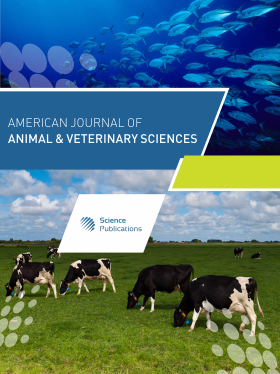Variations in Pathogenicity and Molecular Characterization of Infectious Bursal Disease Virus (IBDV) In Egypt
- 1 Alexandria University, Egypt
- 2 Suez Canal University, Egypt
Abstract
Infectious bursal disease consider a vital threat to poultry industry worldwide and It has special potentiality in Egypt as the country become endemic with several clades from avian influenza from both types highly pathogenic (H5N1 and H5N8) and low pathogenic one (H9N2). The Egyptian government depends on the inactivated vaccine strategy to control avian influenza and any infection with IBD in broiler flocks alter the inactivated vaccine response in addition to other economic loss from the IBD infections. The present study was conducted to investigate the variations in pathogenicity and molecular characterization of IBDV in Egypt. Twenty-six bursal samples were collected from different chicken farms during the period of June 2015 to April 2016; the virus was isolated by inoculation of bursal suspension into 10-11 days ECE via CAM. Reverse Transcriptase Polymerase Chain Reaction (RT-PCR) was applied for IBD targeting Hypervariable Region (HVR) of VP2 gene. Out of 26 tested isolates, 11 isolates were positive by RT-PCR. Sequence analysis of PCR products of 11 positive isolates were carried out and revealed that all +ve isolates were characterized as very virulent (vvIBDV) strains and they showed 80.6-97.5% identity with Giza 2008 IBD strain. Six selected positive vvIBDV isolates were used to study the pathogenicity of IBDV in 105 one-day-old SPF chickens. At day 211st the SPF chickens were divided into 7 groups 15 bird/each, the groups 1-6 were experimentally infected with 0.1 mL of EID50 of 6 selected positive IBDV field isolates via naso-ocular route. Group 7 kept as non-infected control. Experimental infection caused clinical signs and gross lesions typical for IBDV and mortalities ranged from 26.7 to 80% as well as bursal/body weight index lower than 0.7 indicating bursal atrophy. The Microscopical examination of bursal samples collected at days 3 and 7 post-infection revealed different degrees of histopathological bursal changes as lymphoid depletion with proliferating interfollicular connective tissue, atrophy of the follicles, stromal edema and associated with inflammatory response. The circulating strains were highly related to vvIBDV strains belonging to serotype-1 isolates and indicating that they are highly pathogenic to 21-day-old SPF chickens and that vvIBDV strains succeeded in surviving in the Egyptian farms despite of the application of intensive vaccination programs.
DOI: https://doi.org/10.3844/ajavsp.2018.76.86

- 6,790 Views
- 5,114 Downloads
- 18 Citations
Download
Keywords
- IBDV
- VP2 Gene
- Bursa
- Variant Strain
- vvIBDV
